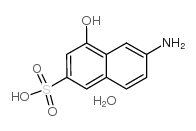| Structure | Name/CAS No. | Articles |
|---|---|---|
 |
6-amino-4-hydroxy-2-naphthalenesulfonic&
CAS:139123-65-2 |
| Structure | Name/CAS No. | Articles |
|---|---|---|
 |
6-amino-4-hydroxy-2-naphthalenesulfonic&
CAS:139123-65-2 |